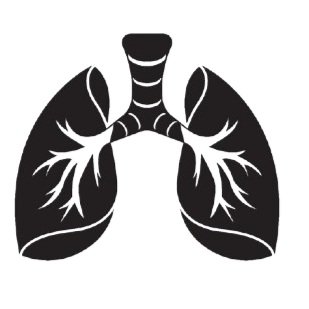What You Need to Know About ILD (Interstitial Lung Disease)
Introduction
Breathing should be effortless. But for those with Interstitial Lung Disease (ILD), even simple tasks like climbing stairs or walking across the room can leave them gasping for air. ILD is not a single condition, but rather a broad group of disorders that cause inflammation and scarring of lung tissue, leading to reduced oxygen exchange and progressive breathlessness.
In cities like Kolkata, where environmental exposure, industrial pollutants, and undiagnosed autoimmune conditions are on the rise, ILD is becoming increasingly common. Recognizing the early signs and consulting a lung specialist in Kolkata can make a major difference in slowing down disease progression and preserving lung function.
What is ILD?
Interstitial Lung Disease is an umbrella term for over 200 types of chronic lung disorders that cause fibrosis—or scarring—of the lungs. This scarring makes the lungs stiff and reduces their ability to transfer oxygen into the bloodstream. Over time, breathing becomes more difficult, and oxygen levels in the body can drop, leading to fatigue and organ stress.
Common ILD conditions include:
Idiopathic Pulmonary Fibrosis (IPF)
Hypersensitivity Pneumonitis
Connective Tissue Disease-associated ILD
Sarcoidosis
Drug-induced ILD
Healthy lung tissue vs. fibrotic lung tissue
Common Symptoms of ILD
One of the challenges with ILD is that its symptoms can often be subtle at first—and mistaken for aging, lack of fitness, or allergies. However, as the disease progresses, symptoms become more persistent and disruptive.
Here are the most common signs of ILD:
Dry, persistent cough that doesn’t improve with routine treatments
Shortness of breath, especially during physical activity or exertion
Unexplained fatigue or a general lack of energy
Weight loss not linked to diet or exercise
Clubbing of fingers (in advanced stages)
If these symptoms persist for weeks or worsen over time, it’s critical to see an interstitial lung disease doctor in Kolkata for evaluation and testing.
What Causes ILD?
ILD can be triggered by a variety of factors. In many patients, the cause is clear; in others, it remains idiopathic (unknown). Understanding possible causes can help in diagnosis and treatment planning.
1. Autoimmune Diseases
Conditions like:
Rheumatoid arthritis
Systemic lupus erythematosus (SLE)
Scleroderma
can cause inflammation that affects lung tissue.
2. Environmental Exposure
Prolonged exposure to:
Asbestos
Silica dust
Bird droppings or mold (organic dust)
can lead to chronic lung inflammation and fibrosis.
3. Medications and Radiation
Certain drugs, especially chemotherapy or long-term antibiotics, may cause lung damage. Radiation therapy to the chest can also trigger ILD.
4. Unknown Causes (Idiopathic)
In conditions like Idiopathic Pulmonary Fibrosis (IPF), the cause is not identifiable, but the disease still progresses unless managed carefully.
How ILD is Diagnosed
ILD diagnosis is complex and requires the expertise of a pulmonologist trained in interstitial lung diseases. The process involves:
Detailed Medical History
Including family history, occupational exposure, travel, medications, and underlying autoimmune disorders.Physical Exam and Lung Function Testing
A Pulmonary Function Test (PFT) helps assess how well your lungs are working.High-Resolution CT Scan (HRCT)
This imaging test reveals patterns of scarring and inflammation typical of ILD.Blood Tests and Autoimmune Panels
To detect underlying inflammatory or autoimmune causes.Bronchoscopy or Lung Biopsy
In some cases, your doctor may recommend these to examine lung tissue directly.
Treatment Options for ILD
There is no cure for ILD, but timely diagnosis and the right treatment can significantly slow progression and reduce symptoms.
Treatment depends on the type of ILD and how advanced it is. Here’s what a lung specialist in Kolkata like Dr. Ayush Goel may recommend:
1. Anti-inflammatory and Antifibrotic Medications
Drugs like corticosteroids or newer antifibrotic agents can reduce lung inflammation or slow down scarring.
2. Oxygen Therapy
For patients with low oxygen levels, supplemental oxygen helps with breathing and improves stamina.
3. Pulmonary Rehabilitation
A structured program of exercise, breathing techniques, and education tailored to improve lung function and overall well-being.
4. Lifestyle Adjustments
Quitting smoking, avoiding pollutants, and regular vaccinations (like flu and pneumonia shots) help prevent flare-ups.
5. Lung Transplant Evaluation
In severe, end-stage ILD where medications are no longer effective, transplant may be considered.
Why Choose Dr. Ayush Goel for ILD Care in Kolkata?
Dr. Ayush Goel is a highly respected interstitial lung disease doctor in Kolkata, with a reputation for delivering expert, compassionate care for patients facing complex lung conditions.
Why patients trust him:
DM in Pulmonary Medicine from AIIMS New Delhi
Certified in Respiratory and Critical Care Medicine
MRCP-UK SCE Certified and European Diploma Holder
Trained in advanced diagnostics including HRCT interpretation and bronchoscopy
10+ global research publications on respiratory diseases
His approach is not just about medication—it’s about understanding each patient’s history, lifestyle, and needs to create a personalized treatment plan.
Final Tips Before You Go
Living with ILD can feel overwhelming, especially when you're unsure of the cause or worried about disease progression. But with timely intervention, lifestyle changes, and expert guidance from a lung specialist, many patients manage ILD and lead full lives.
If you or a loved one is experiencing unexplained breathlessness, chronic dry cough, or fatigue, it’s important to seek evaluation.
Book your ILD consultation with Dr. Ayush Goel in Kolkata and take the first step toward better lung health and clearer breathing.


